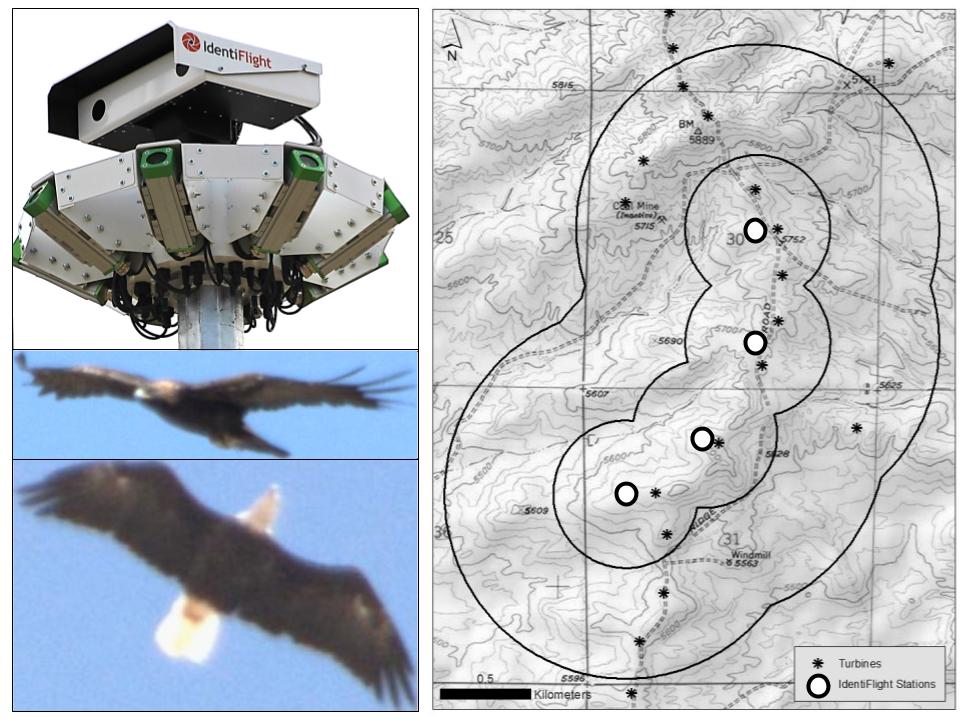“I don’t think either of us would be working with these projects in the way or capacity that we are if we didn’t have access to R2.”
This is how Jennifer McCabe, a researcher with the Peregrine Fund, describes her and colleague Brian Rolek’s need for Boise State’s R2 compute cluster. They’re engaged in separate research projects that use computational models to analyze golden eagle behavior. Both researchers are utilizing a custom software container environment on R2 that was built by Research Computing employee Forrest Burt.
For her part, McCabe is utilizing large scale ecological data and telemetry to better map the distribution of golden eagles and how topography affects their use of the landscape. As eagles are often in places where it is difficult or impossible for humans to observe them, much of this data is collected from telemetry backpack units that are fitted onto the birds. This allows for much more data to be collected – as a result, the dataset has about 600,000 distinct data points in it. McCabe has built models to analyze this dataset that use the power of the compute cluster to reach deeper levels of complexity than would otherwise be possible.
“Simpler models would consider all the eagles as one bird. With a more complex model, we can look at their individual habitat selection and incorporate that into the model, which we wouldn’t have been able to do otherwise. With the cluster, we can also model the entire Eastern United States at once as opposed to just individual states,” McCabe says.
This work allows for better management of golden eagle habitats through the creation of monthly predictive maps showing high to low golden eagle habitat use. Land managers can then use these maps in various ways; for example, land managers could use the maps to identify areas that would be good for wind turbines by finding areas on the maps where eagle activity is consistently low.
The models developed by McCabe will likely be applied in the future to the management of other bird species beyond the golden eagle.

Rolek’s research deals with a commonly discussed renewable energy problem: bird strikes on wind turbines. The dataset he works with comes from a device mounted on the turbines that tracks, in three dimensions, the flight paths of birds as they approach the turbine. Rolek then uses R2 to analyze this dataset in order to develop an algorithm for the automatic identification of flight paths that are likely to lead to a collision, allowing for the turbine to automatically shut off when necessary and restart once the bird has passed.
“Survival rates of eagles are important for sustaining populations because these are long-lived birds. Many sites with wind turbines currently do not have automated curtailment of turbines when eagles approach near enough to pose a high risk of collision. What we’re trying to do is predict golden eagle behavior to reduce collision chances while maximizing the efficiency of renewable energy. Renewable energy is increasing in use because of its potential to fight climate change and the problems that some renewable energy systems introduce to wildlife can cause concern, so we’re working to minimize that risk,” Rolek says.
Rolek’s research helps to create a more optimum future situation for the health of eagles and the efficiency of wind energy by both reducing eagle strikes on the turbines and preventing turbines from being shut down unnecessarily if there’s no threat to nearby birds.
More info about the Peregrine Fund and the work it does across the world can be found at https://peregrinefund.org/. Read more about the project funding Brian Rolek’s work at https://awwi.org/wind-wildlife-research-fund/.
By Forrest Burt